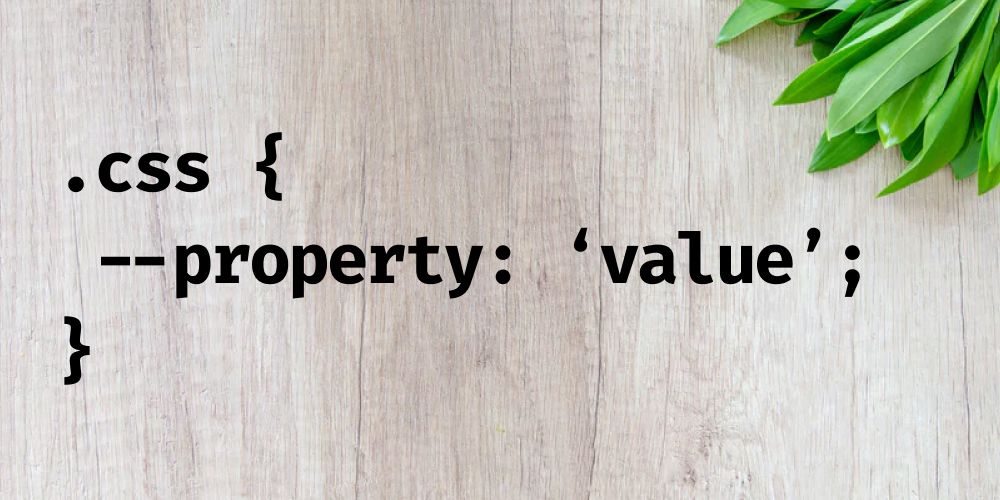What are CSS Variables?
Everything you need to know about CSS Variables.

CSS Variables are also commonly known as "CSS Custom Properties". These terms can be used interchangeably. They do what you would expect them to : define variables and be able to refer back to them in your CSS.
They're very powerful compared to what we were used to in front-end land, and can be sometimes abused. Not sure if that's good or bad. But hey, look ma! NO JS!
Loading browser compatibility data...
Here's what you need to know, and more :
Why?
They're variables. They help you write better code with less repetition and more maintainability.
How to definine a CSS Variable
Here are 3 examples of custom property definitions. Yes, they're all string/text.
.container {
--blue: '#004a8f';
--size: '10px';
--shadowLarge: '0 0 10px #000';
}
How to use a CSS Variable
The syntax is weird, but there's a good reason for that and some advantages too.
.container {
--color: 'red';
background: var(--color);
}
It looks like a function call, where the argument is the name of the CSS Variable.
Scope of CSS Variables
As you may have noticed in the example above, CSS Variables need to be defined within a selector scope.
If you try to use the CSS Variables outside this scope it will not work.
.container {
--borderWidth: '2px';
}
/* Bad. Will NOT work, unless .wrapper is a child of .container */
.wrapper {
border: var(--borderWidth) solid black;
}
You may use the CSS Variables in child elements as they inherit from their parents.
If you need to define Global CSS Variables, you may do that using the :root pseudo element:
:root {
--myGlobalVariable: '#fff';
}
Since the ::root element is parent to html, the entire DOM is considered it's children.
CSS Variables can have fallbacks
Plot-twist! They can have multiple parameters, which serve as fallbacks
.container {
background: var(--color, blue);
}
In the example above the --color variable is never defined, hence it will fallback to the 2nd parameter and you have a blue background. The fallback can also be a CSS Variable.

Inline CSS Variables
It's possible to define the css variable inline, like you would do with any normal css.
<div style="--color: 'red'" class="container"></div>
.container {
color: var(--color);
border: 1px solid var(--color);
}
This opens huge possibilities when combined with JS. Let's assume you're using a simple VueJS app to create toggle, you could easily combine them as follows:
<div :style="'--color: ${themeColor}'" class="container"></div>
This technique delegates all the rendering responsibilities to CSS and lets you fine tune the moving parts with JavaScript. We want this.
Browser Support
Use them if you don't need to support IE11. If you do need to support IE11, you have my sympathy.

CSS Variable browser support. Screenshot taken on the 30th December 2019
BONUS : Houdini API & Custom Properties
This part is brand new and it's ok if you're not ready to dive into Houdini right now. No pressure.
You might have noticed all the custom properties we defined were 'text', i.e they have no Types. With the Houdini API it is possible to register a CSS Custom Property using the registerProperty method.

The code is very simple and looks like this
window.CSS.registerProperty({
name: '--borderColor',
syntax: '<color>',
inherits: false,
initialValue: 'red',
});
You might wonder, why ? Consider the following example :
.thing {
--borderColor: "0 0 10px solid";
border: 1px solid var(--borderColor);
}
The value of --borderColor will obviously not work because it's not a color and we would end up with no border color.
With the help of the registerProperty however, it would detect that the value is not a valid <color> and fallback to the red color as defined in the type definition.
You can learn more by reading the article "Smarter custom properties with Houdini’s new API" by Sam Richard
Conclusion
I hope this article makes it easier for you to deal with custom properties in the future. As you have seen, it's really simple & powerful.
